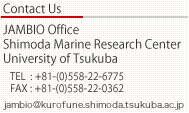![]()
October 2, 2015Sperm-Specific Calcineurin is Essential for Proper Sperm Motility ~ Identification of New Molecular Target for Male Contraceptives
Research group of Professor Masahito Ikawa and Assistant Professor Haruhiko Miyata at Osaka University, in collaboration with Professor Kazuo Inaba and Assistant Professor Kogiku Shiba at Shimoda Marine Research Center, University of Tsukuba discovered that the sperm-specific isoform of an enzyme called calcineurin is essential for normal sperm motility and male fertility. When gene-modified mice lacking sperm calcineurin were produced utilizing genome-editing, the group discovered that male mice were infertile because sperm midpiece was rigid and cannot penetrate the zona pellucida surrounding the oocyte. The group also found that sperm calcineurin exists in humans and has enzymatic activity. These results suggest that specific inhibition of sperm calcineurin may lead to the development of rapid and reversible male contraceptives. These results were published online in Science on October 1st, 2015.
http://www.sciencemag.org/content/early/2015/09/30/science.aad0836.abstract
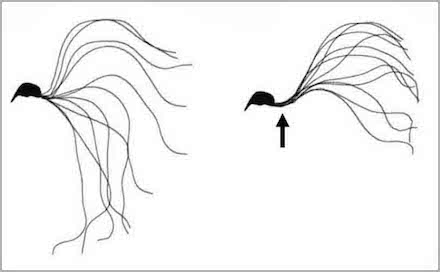
June 10, 2015Discovery of about 50 new species around Sagami Bay
-Results from the JAMBIO Coastal Organism Joint Surveys-
18 researchers from 10 institutions across the country, including associate professor Hiroaki Nakano, Shimoda Marine Research Center, University of Tsukuba, reported their discovery of about 50 new species around Sagami Bay.
JAMBIO, Japanese Association for Marine Biology, was established by collaboration between Shimoda Marine Research Center, University of Tsukuba, and Center for Marine Biology, the University of Tokyo, to further accelerate nationwide interdisciplinary research collaborations among various marine biology researcher communities in Japan. As one of its central strategic projects, JAMBIO has organized JAMBIO Coastal Organism Joint Surveys at Shimoda Marine Research Center, University of Tsukuba, and Misaki Marine Biological Station, the University of Tokyo. The aim of the Survey is to uncover the marine fauna (especially animals that are about several cm long) of the coastal areas in and around Sagami Bay. Six surveys have been held so far, with 109 participants in total, from 15 institutions across Japan. For more information on the JAMBIO Coastal Organism Joint Surveys:
http://www.shimoda.tsukuba.ac.jp/~jambio/joint-research.html (in Japanese)
There are still samples left to be analyzed, but from the six surveys, at least 250 species spanning 18 phyla have been found, including about 50 undescribed species. Furthermore, the results showed that the Surveys promise to be a powerful method not only for systematics and biodiversity studies, but also for phylogeographical, ecological, and environmental studies. There are plans to continue and expand the Surveys, with the goals of revealing the rich marine biodiversity around Japan, and of forming a collaborative network between marine biologists across the country.
These results were published in ‘Regional Studies in Marine Science’ (Elsevier) on May 20th, 2015.
http://www.sciencedirect.com/science/article/pii/S2352485515000158
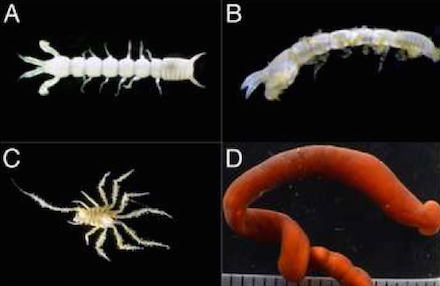
September 23, 2014Birth of quail chicks after intracytoplasmic sperm injection
Research group of Associate Professor Tomohiro Sasanami and Dr. Shusei Mizushima at Shizuoka University, in collaboration with Professor Kazuo Inaba and Assistant Professor Kogiku Shiba at Shimoda Marine Research Center, University of Tsukuba, Shinshu University and Seoul National University, succeeded in the first-ever birth of live quail chicks using ICSI (Intracytoplasmic sperm injection). These findings will advance our understanding of the mechanism in avian fertilization and embryo development, as well as assisting in industrial, agricultural and conservation applications, including avian transgenesis, cloning technology and protection of endangered bird species. These results were published online in Development on September 23rd, 2014.
http://dev.biologists.org/content/141/19/3799.long
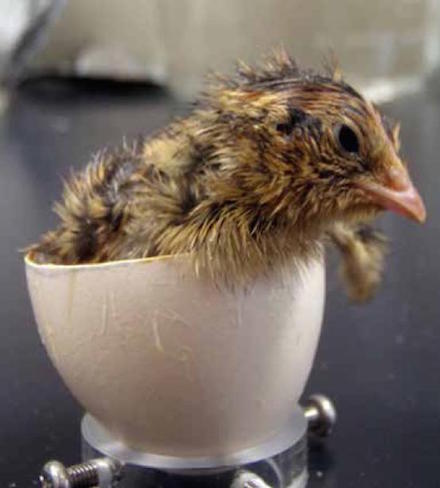
June 19, 2014Discovery of the strange animal, “placozoans”, along the Japanese coast
Discovery of the strange animal, “placozoans”, along the Japanese coast
Placozoans are flat amoeba-like marine animals about 1 mm, made up of only seven cell types. They lack neurons and muscle cells, but are not sessile or parasitic, making them the simplest extant free-living animals. Their phylogenetic position implies they are important for uncovering the origins of metazoans, but many important information of the animal, such as development, ecology, and classification still remain unknown.
They are difficult to find from a natural environment, and the original report in 1883 was reported from specimens discovered in an aquarium. Surprisingly, the second report ever for placozoans from a wild environment was from Japan in 1977. However, little research has been performed on Japanese placozoans since.
Assistant professor Hiroaki Nakano (University of Tsukuba) has succeeded in collecting placozoans in the below six locations around Japan.
Shimoda Marine Research Center, University of Tsukuba, Shimoda, Shizuoka
Noto Marine Laboratory, Kanazawa University, Noto, Ishikawa
Marine and Coastal Research Center, Ochanomizu University, Tateyama, Chiba
Sugashima Marine Biological Laboratory, Nagoya University, Toba, Mie
Seto Marine Biological Laboratory, Kyoto University, Shirahama, Wakayama
Tropical Biosphere Research Center Sesoko Station, University of Ryukyus, Okinawa
Collections were even successful during winter, showing that they are present in Japan all thorough the year. Although they are regarded as tropical-subtropical animals, this study implies that large placozoan populations may be present in temperate and cold water seas worldwide. Studies on these populations may be useful to uncover important biological problems that still remain unsolved for the phylum. These results were published in Scientific Reports (Nature Publishing Group) on June 19th, 2014.
http://www.nature.com/srep/2014/140619/srep05356/full/srep05356.html
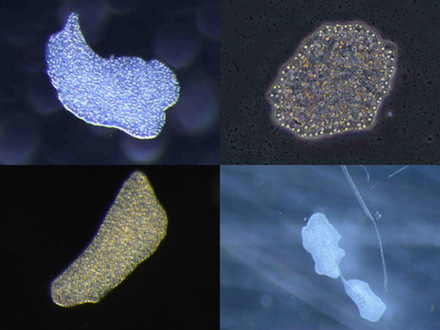
May 23, 2014Transposon-mediated targeted and specific knockdown of maternally expressed transcripts in the ascidian Ciona intestinalis.
Maternally transcribed mRNAs play crucial roles during early embryogenesis of ascidian. Ms. Takako Iitsuka, Dr. Yasunori Sasakura and their colleagues at Shimoda Marine Research Center, University of Tsukuba has developed a new method to specifically knockdown maternal mRNAs in Ciona intestinalis using transposon-mediated transgenesis in collaboration with Drs. Nori Satoh and Mayuko Hamada at Okinawa Institute of Science and Technology Graduate University. The group found that GFP expression is epigenetically silenced in Ciona intestinalis oocytes and eggs, and this epigenetic silencing of GFP was used to develop the knockdown method. When the 5’ upstream promoter and 5’ untranslated region (UTR) of a maternal gene are used to drive GFP in eggs, the maternal gene is specifically knocked down together with GFP. This new method can overcome problematic issues associated with previous methods used to investigate maternal mRNAs in Ciona and provide breakthroughs in studying the functions of maternal mRNAs. These results were published in Scientific Reports.
http://www.ncbi.nlm.nih.gov/pubmed/24854849
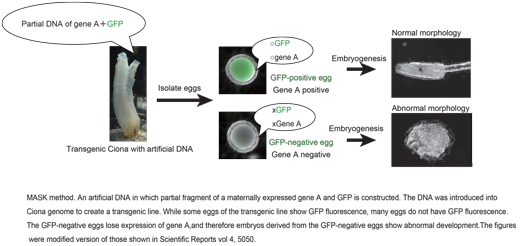
April 22, 2014Mechanisms of backward swimming in sperm of marine snails
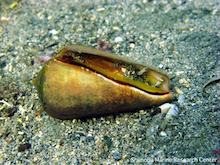 The marine snail Strombus luhuanus has two types of sperm called as eusperm and parasperm. The eusperm have a nucleus and fertilize the egg, whereas the other type of sperm, parasperm, are anucleate and are thought to assist the fertilization of egg and the eusperm. Assistant Prof. Kogiku Shiba, Postdoctoral fellow Daisuke Shibata and Prof. Kazuo Inaba at Shimoda Marine Research Center, University of Tsukuba have discovered that the Strombus luhuanus eusperm change the swimming direction and flagellar waveforms depending on swimming time and extracellular calcium ion. Interestingly the Strombus luhuanus eusperm show two distinct patterns of backward swimming for different process of fertilization. These findings will contribute to elucidate the mechanism of internal fertilization and regulation of flagellar movement. These results were published in Journal of Experimental Biology on March 15, 2014.
The marine snail Strombus luhuanus has two types of sperm called as eusperm and parasperm. The eusperm have a nucleus and fertilize the egg, whereas the other type of sperm, parasperm, are anucleate and are thought to assist the fertilization of egg and the eusperm. Assistant Prof. Kogiku Shiba, Postdoctoral fellow Daisuke Shibata and Prof. Kazuo Inaba at Shimoda Marine Research Center, University of Tsukuba have discovered that the Strombus luhuanus eusperm change the swimming direction and flagellar waveforms depending on swimming time and extracellular calcium ion. Interestingly the Strombus luhuanus eusperm show two distinct patterns of backward swimming for different process of fertilization. These findings will contribute to elucidate the mechanism of internal fertilization and regulation of flagellar movement. These results were published in Journal of Experimental Biology on March 15, 2014.
http://www.ncbi.nlm.nih.gov/pubmed/24311809」
May 28, 2013Sperm from Sneaker Male Squids Exhibit Chemotactic Swarming to CO2.
 In the coastal squid Loligo bleekeri, two types of males, called consort and sneaker males, exhibit different mating behaviors and produce two morphologically different spermatozoa. A research group of Associate Prof. Noritaka Hirohashi at Oki Marine Biological Station, Shimane University, Dr. U. Benjamin Kaupp at CAESAR, Germany, Prof. Shoji A. Baba at Ochanomizu University and other colleagues, in collaboration with Prof. Kazuo Inaba and Assistant Prof. Kogiku Shiba at Shimoda Marine Research Center, University of Tsukuba, have discovered that the Loligo bleekeri sperm of only sneaker males show self-attraction caused by chemotactic swarming to CO2. These results were published in Current Biology on May 6, 2013.
In the coastal squid Loligo bleekeri, two types of males, called consort and sneaker males, exhibit different mating behaviors and produce two morphologically different spermatozoa. A research group of Associate Prof. Noritaka Hirohashi at Oki Marine Biological Station, Shimane University, Dr. U. Benjamin Kaupp at CAESAR, Germany, Prof. Shoji A. Baba at Ochanomizu University and other colleagues, in collaboration with Prof. Kazuo Inaba and Assistant Prof. Kogiku Shiba at Shimoda Marine Research Center, University of Tsukuba, have discovered that the Loligo bleekeri sperm of only sneaker males show self-attraction caused by chemotactic swarming to CO2. These results were published in Current Biology on May 6, 2013.
http://www.sciencedirect.com/science/article/pii/S0960982213003424
May 14, 2013"MytiLec" is a novel structure family of lectin isolated from the Mediterranean mussel
The Mediterranean mussel (Mytilus galloprovincialis) is a useful experimental animal model to study in the life sciences, fisheries and ecosystem sciences. MytiLec is an α-galactoside binding lectin isolated from the mussels and its novel primary structure was determined (UniProt ID: B3EWR1(LEC_MYTGA)). It consisted of 149 amino acids in the polypeptide with the acetylated N-terminal Thr, one Trp and no Cys. MytiLec has a triple tandem-repeat domain of 50 amino acids. The basic amino acid residues are highly conserved throughout the domains, whereas the acidic amino acid residues are located at the C-terminal side of the domains. Frontal affinity chromatography found that it specifically bound to globotriose (Gb3: Galα1-4Galβ1-4Glc) and the lectin induced the late apoptosis against human lymphoma Raji cells, which express Gb3-glycosphingolipids. cDNA and an structure homologue of MytiLec were also found from MytiBase (http://mussel.cribi.unipd.it), an EST-database for M. galloprovincialis (GenBank ID: FL492661.1) and cDNA of a Crenomytilus grayanus GalNAc/Gal-specific lectin in GenBank (JQ314213.1), respectively. This study has been conducted by collaborative research with Prof. Yasuhiro Ozeki (Yokohama City Univ., Yokohama, Japan), Head and Adjunctive Assoc. Prof. Naoshi Dohmae (Biomolecular Characterization Team, RIKEN and Saitama Univ.), Assist. Prof. Yuki Fujii and Assoc. Prof. Yukiko Ogawa (Nagasaki International Univ.), Assist. Prof. Shigeki Sugawara (Tohoku Pharmaceutical Univ.), MEXT Ph.D fellow and Assist. Prof. Imtiaj Hasan (Graduate School of Yokohama City Univ., Japan and Univ. of Rajshahi, Bangladesh), Assoc. Prof. S. M Abe Kawsar (Univ. of Chittagong, Bangladesh and previous MEXT Ph.D and JSPS Post-Doc fellow at Yokohama City Univ.), Mr. Yasuhiro Koide (Graduate School of Yokohama City Univ.) and Prof. Taei Matsui (Fujita Health Univ.). This work was supported by JAMBIO, MEXT (Project ID: 24-03) and JSPS and published through The Journal of Biological Chemistry (vol 287, 44772-44783. 2012).
http://www.jbc.org/content/287/53/44772.abstract (Published article)
http://www.uniprot.org/uniprot/B3EWR1#ref1 (UniProt database: Primary strucure of MytiLec)
http://www.ncbi.nlm.nih.gov/nucest/FL492661.1 (GenBank: FL492661.1, cDNA sequence of MytiLec in MytiBase)
http://www.ncbi.nlm.nih.gov/nuccore/JQ314213.1 (GenBank: JQ314213.1, cDNA sequence of Crenomytilus grayanus GalNAc/Gal-specific lectin)
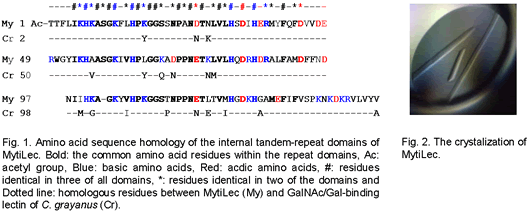
February 26, 2013First Observations of Xenoturbella development
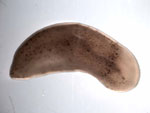 Xenoturbella is a marine worm about 1 cm long with a simple body plan, lacking an anus, coeloms, organized gonads and a brain. Because of this simple morphology, its phylogenetic position has long remained obscure. Developmental studies may provide data to help resolve this problem, but the development of Xenoturbella has remained a mystery since the animal was first collected more than 130 years ago. Dr. Hiroaki Nakano and his collaborators have succeeded in making the first observations of developmental stages of Xenoturbella, and revealed that they have direct-development with a simple and short swimming stage. These observations provide new implications on the origins and evolution of marine invertebrate larvae. These results were published in Nature Communications on February 26, 2013.
http://www.nature.com/ncomms/journal/v4/n2/full/ncomms2556.html
Xenoturbella is a marine worm about 1 cm long with a simple body plan, lacking an anus, coeloms, organized gonads and a brain. Because of this simple morphology, its phylogenetic position has long remained obscure. Developmental studies may provide data to help resolve this problem, but the development of Xenoturbella has remained a mystery since the animal was first collected more than 130 years ago. Dr. Hiroaki Nakano and his collaborators have succeeded in making the first observations of developmental stages of Xenoturbella, and revealed that they have direct-development with a simple and short swimming stage. These observations provide new implications on the origins and evolution of marine invertebrate larvae. These results were published in Nature Communications on February 26, 2013.
http://www.nature.com/ncomms/journal/v4/n2/full/ncomms2556.html
December 18, 2012Calaxin drives sperm chemotaxis by Ca2+-mediated direct modulation of a dynein motor
Dr. Katsutoshi Mizuno, assistant prof. Kogiku Shiba and prof. Kazuo Inaba at Shimoda Marine Research Center, University of Tsukuba revealed a role of calaxin in the regulatory mechanism of sperm chemotaxis in the ascidian Ciona intestinalis in collaboration with National Institute of Information and Communications Technology (NICT) and the University of Tokyo. Prof. Inaba and his colleagues previously identified calaxin, a calcium binding protein, in Ciona sperm and reported that it interacts directly with the flagellar motor protein dynein. In this study, they found that calaxin directly controls the motor activity of dynein in a Ca2+ dependent manner and regulates flagellar waveforms to change sperm swimming direction toward the egg. Calaxin exists not only in the ascidian, but also in other metazoans. These findings will shed light on the common mechanism of sperm chemotaxis and regulation of flagellar and ciliary movement. These results were published in Proceedings of the National Academy of Sciences of the United States of America (PNAS) on Nov. 20, 2012.
http://www.ncbi.nlm.nih.gov/pubmed/23169663
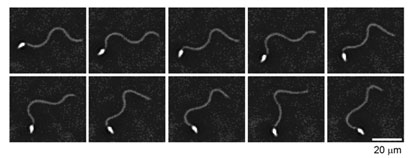 Changes in flagellar waveforms during sperm chemotaxis
Changes in flagellar waveforms during sperm chemotaxis
November 29, 2012Mechanisms of immotile diploid spermatozoa from sex-reversed clone loach
In the loach Misgurnus anguillicaudatus, most individuals are sexually reproducing diploids and they generate haploid gametes. However, all-female clonal lineages have been found in a few wild populations in Japan. They spawn unreduced diploid eggs which develop by gynogenesis without any genetic contribution of sperm donor. Sex-reversed clone diploid male can be induced by administration with 17-α methyltestosterone. The sex-reversed clone male produces diploid sperm with genetically identical genotypes. Furthermore, tetraploid loaches, which were found in market samples and induced by chromosome manipulation, produced diploid sperm. Diploid sperm of sex-reversed clonal diploid males exhibited very poor motility and the resultant fertilization rate was very low, while diploid sperm of tetraploid male gave considerably active motility like haploid sperm of normal diploid males. Mechanisms underlying such a difference in motility between two kinds of diploid sperm have not been examined yet. Electron microscopy revealed that diploid spermatozoa from sex-reversed clonal diploid and neo-tetraploid males exhibited normal shape similar to haploid spermatozoa from normal diploid males, except for larger sperm-head size and longer flagellum. Considering flow-cytometric results, volume of mitochondrial mass per spermatozoon was also increased in proportion to the elevation of ploidy status from haploid to diploid sperm. Diploid spermatozoa from neo-tetraploid increased the number of mitochondria and the ATP content, but those from sex-reversed clonal diploid males did not show such results. This study was supported by JAMBIO and published in Journal of Applied Ichthyology.
Zhao et al., J. Appl. Ichthyol. 28 (2012), 1006-1012
doi: 10.1111/jai.12069

Sex-reversed clone loach was induced by administration with 17-α methyltestosterone. The sex-reversed loach exhibits well developed pectral fin which is one of male specific characteristics.
June 25, 2012SAL with SUEL-type lectin domains depleted multidrug resistant transporter MRP1 gene expression of on Burkitt's lymphoma cells by a novel lectin-glycan pathway
A rhamnose-binding lectin SAL isolated from catfish (Silurus asous) egg has three tandem sea urchin egg lectin (SUEL)-type lectin domains in the polypeptide and depleted the expression level of mRNA coding a multidrug resistance transporter, MRP1 on Burkitt's lymphoma Raji cells through binding with globotriaosyl ceramide Gb3 (Galα1-4Galβ1-4Glc-Cer) expressed on the cell. This pathway inhibited to excrete chemotherapy drugs and the administration of vincristine could effectively kill Raji cells even at l/10 low concentration than the lethal-doses, if co-treatment with SAL was conducted. Drs.
Yuki Fujii (Nagasaki International Univ.) and Shigeki Sugawara (Tohoku Pharmaceutical Univ.), Assoc. Prof. Sarkar M. Abe Kawsar (Univ. of Chittagong, Bangladesh) and Prof. Yasuhiro Ozeki (Yokohama City Univ.) published the fascinating result as the lectin-glycosphingolipid pathway induced down-regulation of mRNA coding MRP1 in The Protein Journal. Moreover, minimally invasive therapy investigation was introduced by the Canadian Web site Global Medical Discovery. They were carried out under the supervision of Profs. Kazuo Nitta, Masahiro Hosono, Motoaki Takayanagi and Sen-itiroh Hakomori (Scientific adviser from Pacific Northwest Diabetes Research Institute, Seattle Wasington, USA) in Tohoku Pharmaceutical Univ.
http://www.ncbi.nlm.nih.gov/pubmed/22083453
http://globalmedicaldiscovery.com/?s=Fujii http://en.wikipedia.org/wiki/Galactose_binding_lectin_domain
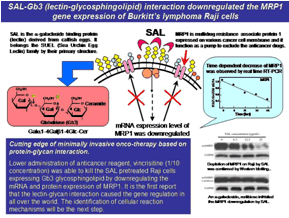
March 13, 2012Mechanism for a self-incompatibility system to avoid self-fertilization
Dr. Takako Saito, Prof. Hitoshi Sawada and Assistant Prof. Lixy Yamada at Sugashima Marine Biological Laboratory, Nagoya University revealed a mechanism of self-incompatibility (SI) system in the ascidian Ciona intestinalis in collaboration with Prof. Kazuo Inaba and Assistant Prof. Kogiku Shiba at Shimoda Marine Research Center, University of Tsukuba. Many hermaphroditic organisms including ascidians have a SI system to avoid self-fertilization. Real-time Ca2+ imaging showed that Ca2+ increase in the sperm triggered by binding to self-egg coat led to the termination of flagellar movement and sperm detachment from the egg coat. These results suggest that s-Themis-B, one of genes responsible for self-sterility and encoding Ca2+ channel identified by Prof. Sawada and his colleagues, may function in rejecting self-fertilization via Ca2+ signals. Plants have similar molecular mechanism for SI system and Ca2+ signaling as ascidians. These findings will shed light on the common mechanism of SI system in plants and animals and can also be applied to many reproductive technologies. These results were published in Proceedings of the National Academy of Sciences of the United States of America (PNAS) on March 13, 2012. .
http://www.ncbi.nlm.nih.gov/pubmed/22357759
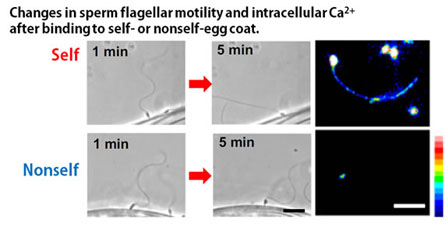
February 10, 2011 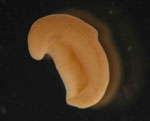 An international research group including Assistant Professor Hiroaki Nakano at Shimoda Marine Research Center, University of Tsukuba, Professor Maximilian Telford at University College London, and other colleagues has shown that the marine invertebrate worms Acoelmorpha and Xenoturbella form a sister group within the deuterostomes. Although there are about 30 animal phyla known today, only three have been regarded as deuterostomes: hemichordates, echinoderms, and chordates, to which we humans belong. 'Xenacoelomorpha', consisting of Acoelmorpha and Xenoturbella, is the fourth living phylum of deuterostomes and further research on Xenacoelomorpha shall provide new insights into the evolution of deuterostomes. These results were published in Nature on February 10th, 2011.
An international research group including Assistant Professor Hiroaki Nakano at Shimoda Marine Research Center, University of Tsukuba, Professor Maximilian Telford at University College London, and other colleagues has shown that the marine invertebrate worms Acoelmorpha and Xenoturbella form a sister group within the deuterostomes. Although there are about 30 animal phyla known today, only three have been regarded as deuterostomes: hemichordates, echinoderms, and chordates, to which we humans belong. 'Xenacoelomorpha', consisting of Acoelmorpha and Xenoturbella, is the fourth living phylum of deuterostomes and further research on Xenacoelomorpha shall provide new insights into the evolution of deuterostomes. These results were published in Nature on February 10th, 2011.
January 3, 2011Drs. Takeo Horie, Yasunori Sasakura and their colleagues at the Shimoda Marine Research Center, University of Tsukuba published a manuscript entitled "Ependymal cells of chordate larvae are stem-like cells that form the adult nervous system" in the journal Nature in collaboration with Dr. Takehiro G. Kusakabe at the Konan University and Dr. Nori Satoh at the Okinawa Institute of Science and Technologies. This manuscript describes transition of the central nervous system during metamorphosis of urochordate ascidian. They showed that larval ependymal cells are the major cells constructing the adult nervous system and some of them are neural stem-like cells that produce adult neurons. These results were published in Nature.
December 17, 2010"Isolation of a novel lectin from feather star with an unique glycan-binding profile"
A novel lectin (glycan-binding protein) has been purified from feather star Oxycomanthus japonicus (Permatozoa: Crinoidea) by Prof. Yasuhiro Ozeki (Graduate School of Yokohama City University), Dr S.M. Abe Kawsar (JSPS Postdoctoral Research fellow), Dr Tomoko F. Shibata (Postdoctoral Research fellow, Department of Biology, University of Miami), technical support division of Misaki Marine Biological Station (Graduate School of the University of Tokyo, Prof. Koji Akasaka, Director) and Yokohama Science Frontier High school (Yokohama City, Japan, Mr. Haruo Sato, Principal) through the support with National BioResource Project (NBRP) MEXT Japan. Glycan-binding specificity of the lectin has been profiled as it recognized only oligosaccharides with type-2 N-acetyllactosamine structure by a glycomics approach using frontal affinity chromatography technology. An uniqueness of the glycan-binding specificity was expected to apply the lectin for the study on regulation of cell differentiation and novel diagnostics. It has been published as a research article as Matsumoto et al., Comparative Biochemistry and Physiology B 158, 266-273 (2011) doi:10.1016/j.cbpb.2010.12.004.
http://www.ncbi.nlm.nih.gov/pubmed/21176791
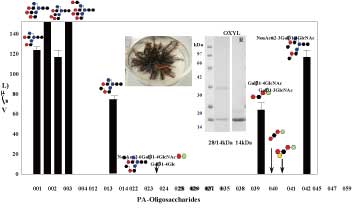
August 23, 2010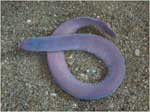 A research group of Professor Masumi Nozaki at Sado Marine Biological Station, Niigata University has identified the first and perhaps only gonadotropin (GTH) from the pituitary of the hagfish Paramyxine atami. The hagfish GTH consists of two subunits, α and β, which are synthesized and colocalized in the same cells of the adenohypophysis. The cellular and transcriptional activities of hagfish GTHα and β were significantly correlated with the developmental stages of the gonad. The purified native GTH induced the release of gonadal sex steroids in vitro. It is suggested that the identity of a single functional GTH of the hagfish provides critical evidence for the existence of a pituitary-gonadal system in the earliest divergent vertebrate that likely evolved from an ancestral, pre-vertebrate exclusively neuroendocrine mechanism by gradual emergence of a new control level, the pituitary, that is not found in the Protochordates. These results were published in Proceedings of the National Academy of Sciences of the United States of America (PNAS) on August 23, 2011.
A research group of Professor Masumi Nozaki at Sado Marine Biological Station, Niigata University has identified the first and perhaps only gonadotropin (GTH) from the pituitary of the hagfish Paramyxine atami. The hagfish GTH consists of two subunits, α and β, which are synthesized and colocalized in the same cells of the adenohypophysis. The cellular and transcriptional activities of hagfish GTHα and β were significantly correlated with the developmental stages of the gonad. The purified native GTH induced the release of gonadal sex steroids in vitro. It is suggested that the identity of a single functional GTH of the hagfish provides critical evidence for the existence of a pituitary-gonadal system in the earliest divergent vertebrate that likely evolved from an ancestral, pre-vertebrate exclusively neuroendocrine mechanism by gradual emergence of a new control level, the pituitary, that is not found in the Protochordates. These results were published in Proceedings of the National Academy of Sciences of the United States of America (PNAS) on August 23, 2011.

